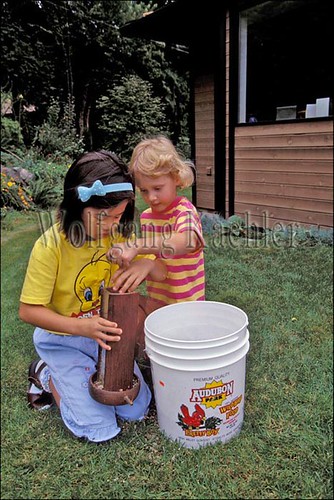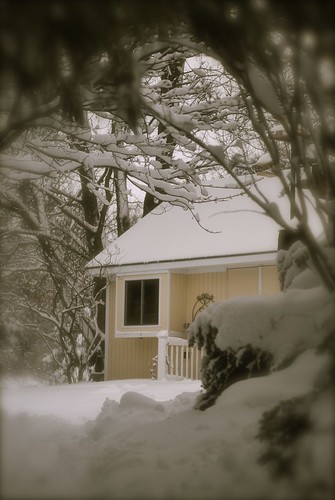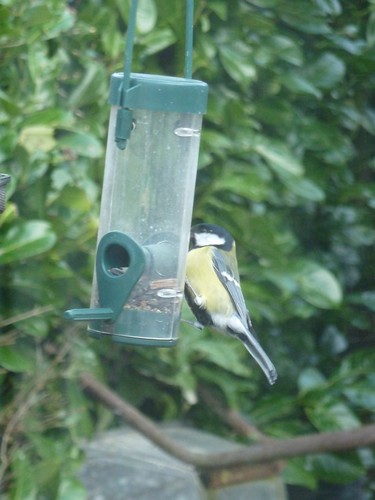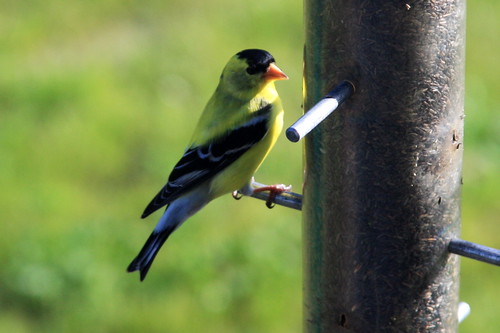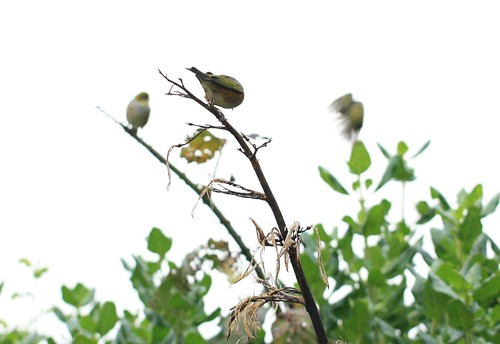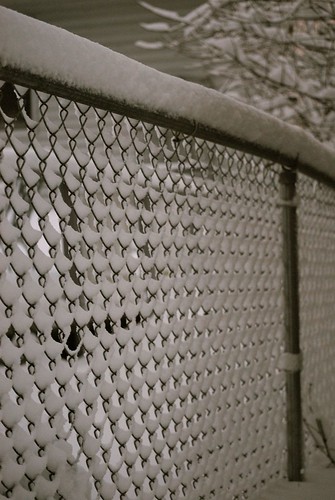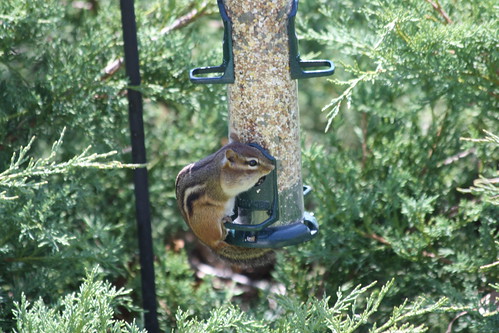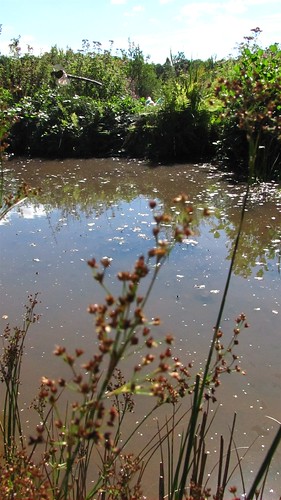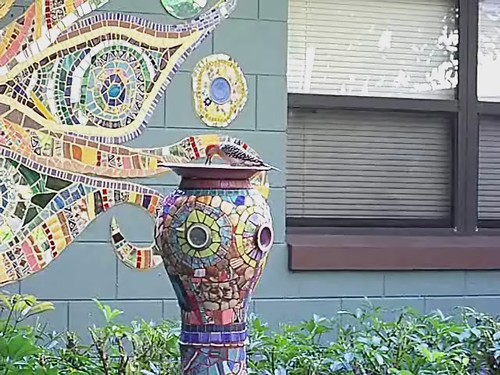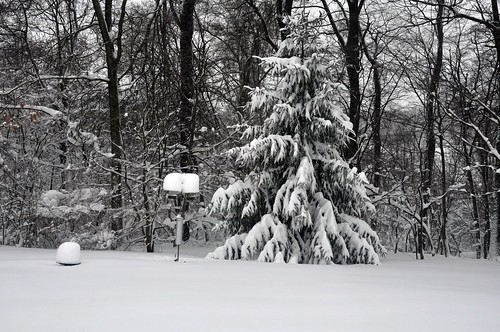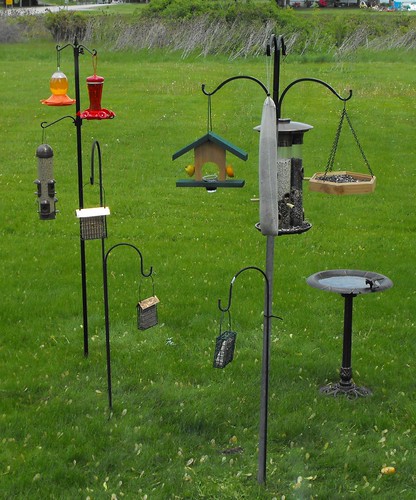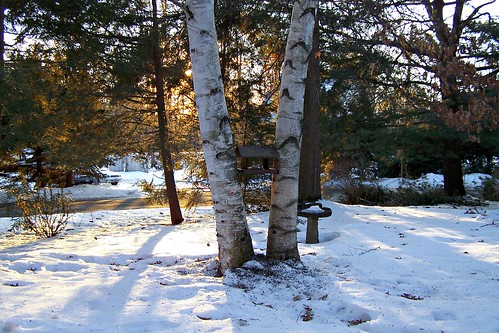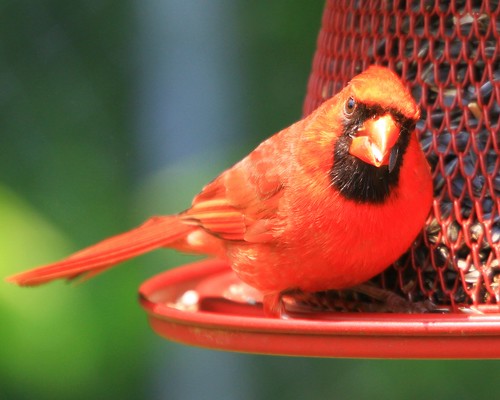
Image : http://www.flickr.com
Many people find bird watching to be a great use of their leisure time. I am one of those people. I can spend hours watching the antics of the birds as they fight for a spot at the feeder or splash in the water taking a refreshing bath. It is so fascinating to watch them as they interact with each other. I can tell you if you ever wanted to know the meaning of pecking order just sit and watch a bird feeder at feeding time. Yes there are regular feeding times. Early morning and again about 3:30 or 4:00 in the afternoon the birds arrive in droves. I think the times I enjoy the most are courting season and when it is time to teach the young ins how to fend for themselves.
It is pretty easy to get birds to visit you just need to provide them with the right environment. Although as with any hobby you need to be a little cautious or you can go way overboard with setting up your yard to attract birds. Trust me I know! Every time I go to one of the home improvement centers I never leave with out finding an excuse to wander down through the bird food and feeder area. But with a little thought and planning you can set up your yard to be a bird haven without breaking the bank.
Let us start with the basics food, water, and shelter. One of the best ways to attract the birds to your yard is to provide them with what they need.
Water
It could be costly to go out and buy a fancy bird bath with running water. While this may make you happy the birds are attracted to the water not the container. Don't go overboard unless you are doing a landscape renovation a simple $15.00 plastic bird bath will do. The birds are attracted by the sunlight glimmering off the water. The idea is to provide the water, not a fancy container. The main thing to remember is to clean out the bird bath and add fresh water daily. A minute or two with the garden hose will give your visitors clean, fresh, and safe water to drink.
Food
The first thing you will need is bird feeders. Yes I said feeders. There are different types of birds and they like different types of food. A good feeder can be bought for between $25 and $35 dollars at most garden centers or home improvement stores. here are different types of feeders and which birds would be attracted to them:
Sunflower Seed Tube Feeders
Best for chickadees, titmice, nuthatches, goldfinches, siskins and purple and house finches. If you are only going to put out a single feeder this would be it. Make sure that the feeder has metal ports around the seed dispensers or sparrows will just chew up plastic. Hang this feeder at least 5 feet off the ground near a window that you can view it from if possible.
Hopper feeders
Will attract red winged blackbirds, blue jays, cardinals, grackles, chickadees, titmice, nuthatches, goldfinches, siskins and purple and house finches. A hopper feeder will hold a couple of pounds of bird food keeping it dry. The feeder should be placed on a pole 5 feet off the ground.
Ground feeders
Sparrows, doves, towhees, juncos, goldfinches and cardinals will be attracted to this feeder
Generally these are screen bottom trays that sit up off the ground a couple of inches. They can be purchased with covers to help keep out the snow and screens to let birds in and to keep hungry squirrels out. This type should placed in an open area at least 10 feet from trees and shrubs to protect the birds from attack from predictors. This type of feeder is not good if there are a lot of cats in the area.
Suet Feeders
Suet is popular with woodpeckers, chickadees, titmice,and nuthatches. Occasionally wrens, warblers, and creepers as well. Suet feeders are like cages that you place the suet cakes in. They can be hung from poles and trees near other bird feeders. Do not use suet feeders when temperatures are 80 degree or higher, as it can turn rancid.
Thistle Feeders
Designed for birds with small beaks redpolls, goldfinches, and pine siskins. These feeder are used for Nyjer seed which resembles small grains of wild rice. The holes are tiny but as this is eaten by finches the holes size keeps the seed from falling out and the small beaks can readily reach them. Place this feeder 5 feet off the ground on a pole or hang from a tree.
Seed
When purchasing seed stay away from the cheap bargain basement priced mixes. A good majority of these are filler seed and will be discarded by the birds.
Sunflower Seed -Black oil sunflower seed is the preferred seed of many small feeder birds, in the northern latitudes. Hulled seeds will attract the greatest variety of birds. red-bellied woodpeckers, jays, goldfinches, finches, evening grosbeaks, pine grosbeaks, cardinals, grackles, titmice, chickadees,and nuthatches.
Millet - White millet is the favorite food of most small-beaked ground-feeding birds. Red-winged blackbirds,doves, quail, sparrows, towhees, juncos, and cowbirds.
Thistle (nyjer) - This is the preferred food of house finches, common redpolls, american goldfinches,and lesser goldfinches. It is very expensive though.
Cracked Corn -Medium cracked corn is as popular as millet, when it comes to ground-feeding birds. Because it attracts moisture cracked corn will rot so be sure to keep an eye on it. Attracts doves, pheasants, quail, jays, crows, juncos, sparrows,and towhees.
Oats - Milo - Wheat -These are frequently mixed into low-priced birdseed blends. Most birds discard them in favor of other food, which leaves them to accumulate under feeders, where they may attract rodents.
Fruit And Berrys - Birds like mockingbirds bluebirds,waxwings, and robins, rarely eat birdseed. You can attract them by placing currents and raisin soaked in water overnight in a ground feeder.
Peanuts - Both whole and crushed peanuts can be placed in a wire mesh feeder they will attract starlings, woodpeckers, chickadees, titmice, brown creepers, wrens, kinglets, brown thrashers, blue jays and warblers
Shelter Or Cover
If possible provide trees and shrubs for the birds in your yard from which they can access the feeders. This added protection will allow the birds a sense of protection and will encourage them to come to your feeder.
It is not necessary to re-landscape the yard but if additional plantings are planned then it would be good to consider the locations that would most encourage the birds. The trees and shrubs do not necessarily need to be in your yard your neighbors yard or a park next door will also provide this shelter.
This by all means is not the complete authority on attracting birds to your yard. The information here however is tried and true and will get birds coming to your yard in no time at all.
For more information about birds and birding visit the National Audubon Society's web site
